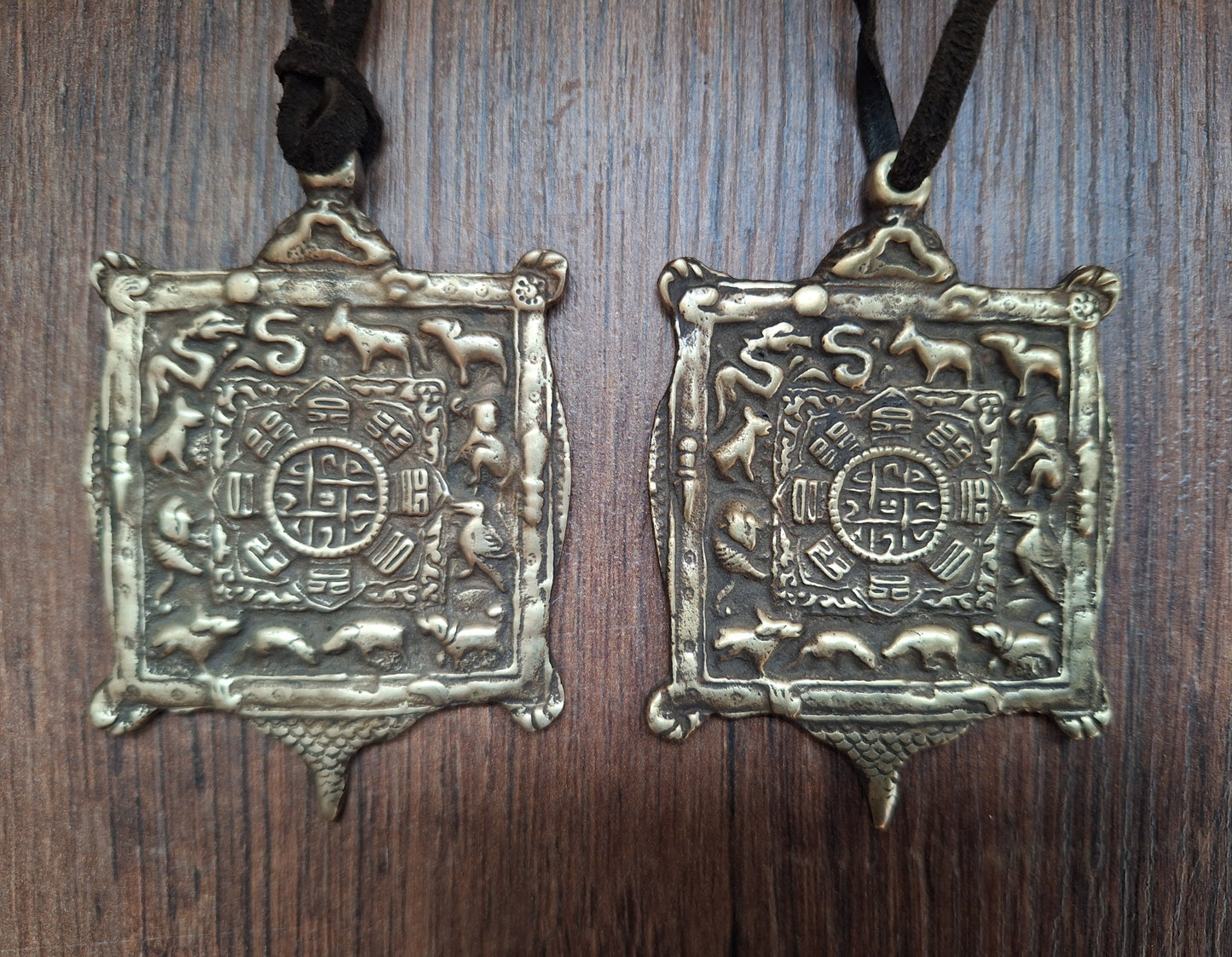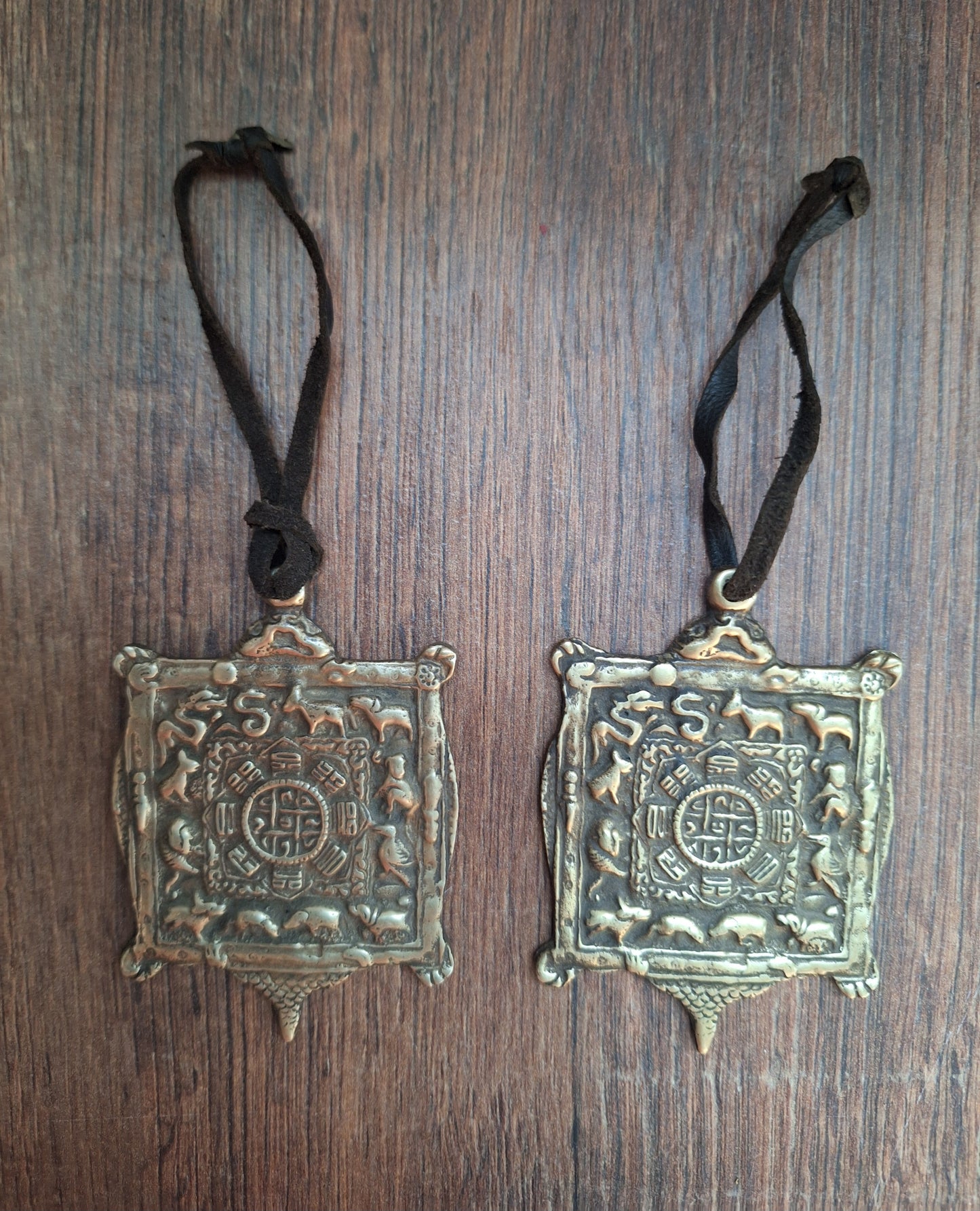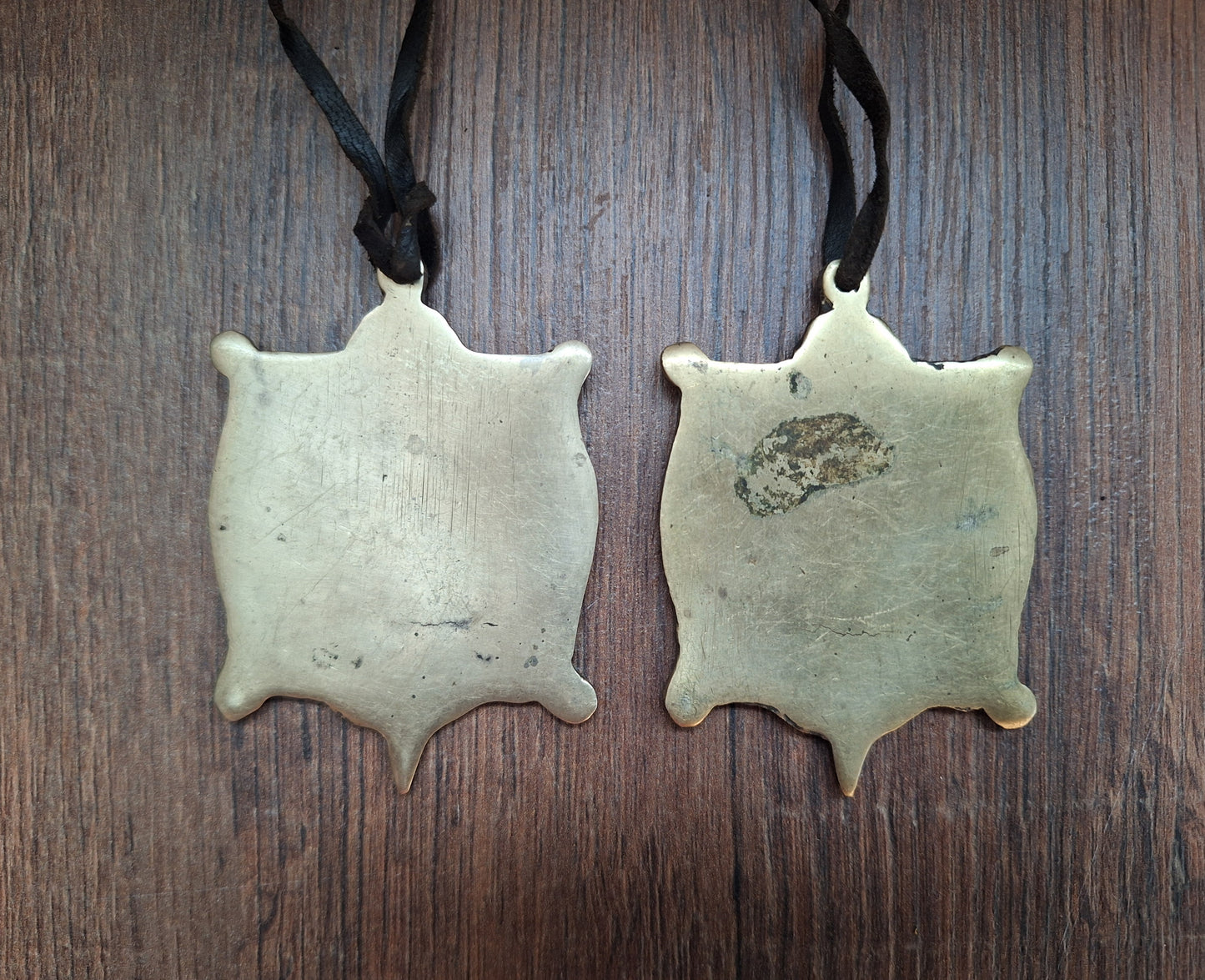Seawolf Shop
Vintage Nepalese melong Rubal with Si Pa Ho 55 millimeters
Vintage Nepalese melong Rubal with Si Pa Ho 55 millimeters
Couldn't load pickup availability
Share
Vintage brass mirrors from Nepal. In Nepal, mirrors such as these are called 'melong'. They are traditionally often worn on the belt, instead of around the neck.
Sizes; 7 centimeters high (measured including the head and tail, but without the eyelet) and 5,5 centimeters wide (measured including the limbs).
Due to their age and previous usage, these mirrors have some scratches and damages. They could definitely do with some good (metal)polish treatment to make them shiny and ready for their new job again. Multiple ones available. If you order one, we will handpick one at random for you.
Design characteristics:
This mirror has been made in the shape of the mythical giant Golden Tortoise Rubal. According to legend, Rubal, risen from the depths of the primordial ocean, was shot by the boddhisattva Manjushri with his arrow of immortality. Manjushri inscribed upon Rubal’s belly the astrological teachings for the benefit of mankind with various diagrams. This chart, known as Si Pa Ho, is nowadays mostly understood to be a protective mandala and as such can be seen on many different objects, such as thangka’s and amulets.
Rubal himself also adds to the protective dynamics of such an item, being portrait as a wrathful protector deity, often in flames and with demonic features.
The astrological chart of Si Pa Ho on the belly of Rubal consists of three schematic images:
1) In the center the mystical square Me Wa Gu can be seen. In the 9 parts the numbers from 1 to 9 are inscribed, the sum of which in each column is 15. This scheme forms in Tibetan-Mongolian astrology a numerological indication of the relationship between a person and deities and spirits. Each digit governs the year, they replace each other in reverse order.
In China this mystical square has been known since 2200 BCE and is called 'Lo Shu' or Nine Halls diagram; it derives from ancient Chinese mathematical and divination traditions, such as the art of Taoist Geomancy. Nowadays it is also widely known as an important emblem in Feng Shui; the 9 parts (also called 'palaces') then represent the 8 directions of the compass plus the central position, with each part having its own energy.
2) In the ring around the square the 8 trigrams ('Ba Gua') of Par Ha Ge can be seen. The trigram symbols come from very ancient origin; they derive from symbols found on ancient Chinese divination bones dating back as long as 11th century BCE. A related version of bone oracle is still used today by Turkic and Mongolian people, and also in the lineage of Spirit of Wolf Shamanism; 'Khaziki'.
Doubled trigrams form 64 hexagrams, which form the core of the I Ching, the Book of Changes.
Each trigram is a divinatory grapheme and represents different dynamics, energies, cardinal points, animals, seasons etc. In depictions such as on these melongs, where the 8 of them together form a circle, it symbolizes heavenly order, a healthy balance and right flow of energy.
3) In the outside circle the 12 animals from the Eastern zodiac can be seen. Just like the circular arrangement of the trigrams, also this motive adds to the idea of heavenly order. But also its presence, when used on shamanic mirrors, symbolizes control over time and space, an important core principle in the practice of shamanism.
Read more about the origin, design and usage of (shamanic) mirrors in the general description of our webshop collection "Mirrors and Melongs".





